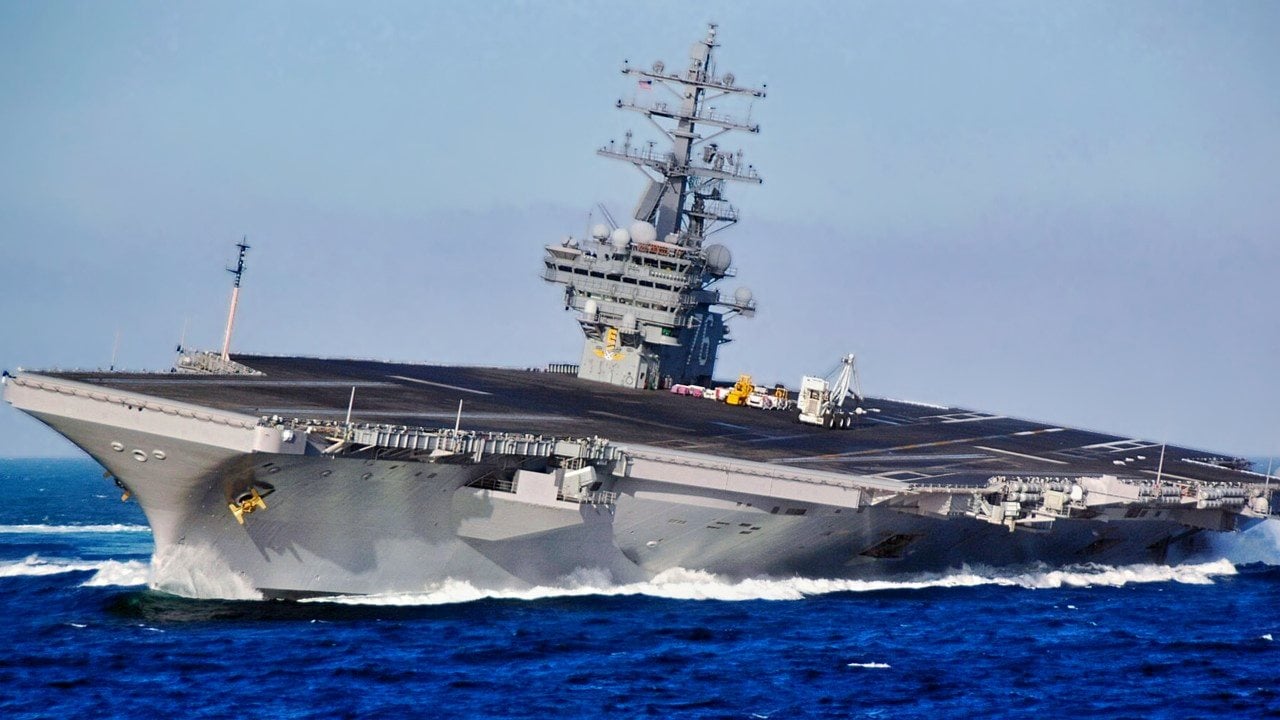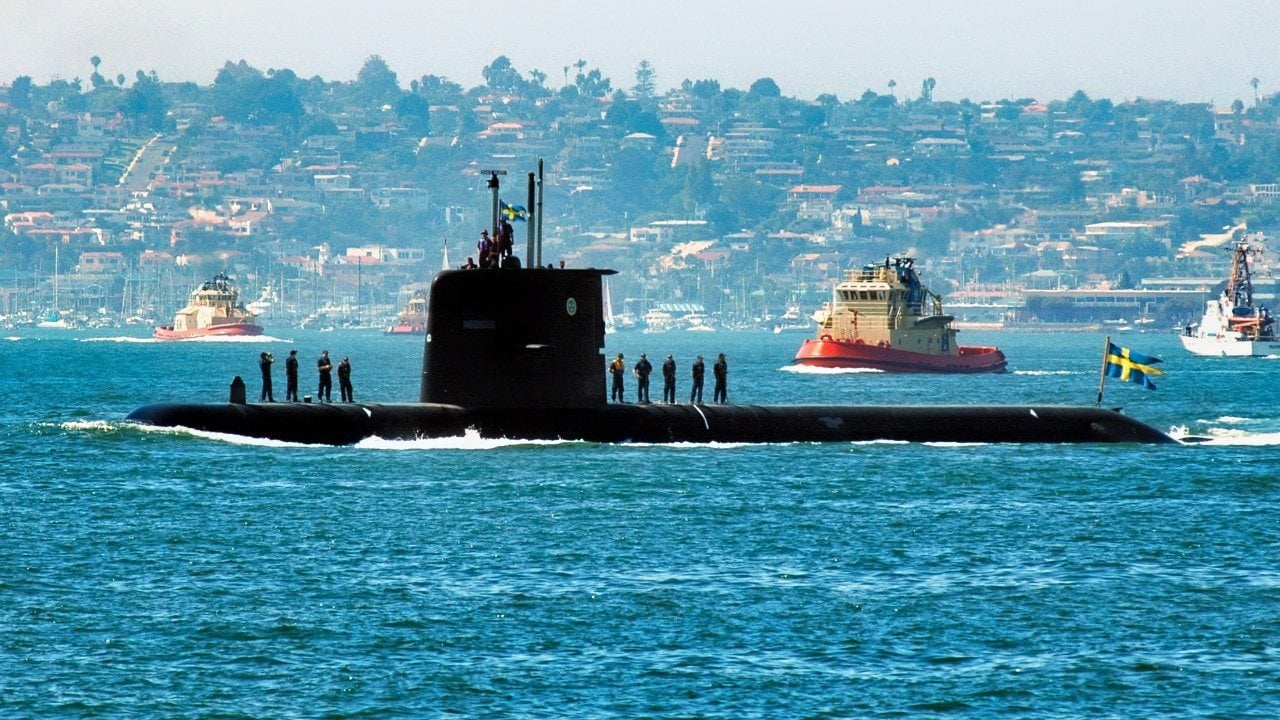How a $100 Million Swedish Submarine Sunk a $6 Billion U.S. Supercarrier
In a 2005 war game, the Swedish diesel-powered submarine HMS Gotland stunned the U.S. Navy by "sinking" the $6 billion USS Ronald Reagan supercarrier. Using highly optimized Sterling engines, the Gotland evaded the carrier's entire strike group and inflicted fatal virtual damage with multiple torpedo strikes.
What You Need to Know: In a 2005 war game, the Swedish diesel-powered submarine HMS Gotland stunned the U.S. Navy by "sinking" the $6 billion USS Ronald Reagan supercarrier. Using highly optimized Sterling engines, the Gotland evaded the carrier's entire strike group and inflicted fatal virtual damage with multiple torpedo strikes.

-Despite the carrier’s advanced defenses, the relatively low-cost submarine managed to escape undetected, raising serious questions about the effectiveness of U.S. defense investments.
-This incident highlights how low-tech solutions can sometimes outmaneuver high-tech systems, making it a valuable lesson in modern naval warfare.
David vs. Goliath: The Swedish Submarine That Outwitted the U.S. Navy's Aircraft Carrier
But sinking alarmed the US Navy – but it was hardly the first time a relatively low-tech submarine had successfully defeated a US supercarrier in a war game. In 2005, the $6 billion-plus USS Ronald Reagan supercarrier was sunk at the hands of a relatively cheap, diesel-powered Swedish submarine, the HMSM Gotland.
Submarine Gotland vs. A U.S. Navy Aircraft Carrier
In the 2005 war game, the Gotland was able to elude Ronald Reagan’s passive sonar defenses and land multiple virtual torpedo strikes, inflicting enough hypothetical damage to sink the carrier.
And then, adding insult to injury, the Gotland was able to sneak away from the scene of the crime without being detected and without a scratch herself.
The Ronald Reagan was hardly alone; she was deployed alongside her entire Carrier Strike Group, which included destroyers, helicopters, and submarines – all geared towards defending the centerpiece of the strike group, the aircraft carrier.
The collective might of the CSG should have functionally canceled out the offensive abilities of the modest Gotland. Yet, the Swedish submarine evaded all US defense measures and landed a fatal blow against a vastly superior and vastly more expensive adversary.

Popular Mechanics explains how the Swedes pulled off a coup against the world’s most advanced navy:
“It’s all thanks to a very old-school engine. Instead of using its diesel to power an internal combustion engine (which is quite loud, what with the explosions and all), the Gotland-class sub instead uses highly optimized Sterling engines, not unlike what you might find as a desk toy, but considerably more high tech. These exceedingly quiet engines are used to charge batteries which in turn can directly run the engines. The result is a sub that’s quieter than any other diesel, and even quieter than its nuclear cousins which require a constant churn of coolant that can give away their position.”
Apparently, sometimes it pays to be out of date.
Gotland-Class: Disproportionate Investment
The Gotland cost only about $100 million. Not much – roughly the price of two F-18 Super Hornets, dozens of which are housed on the Ronald Reagan. At $100 million, the Gotland costs about one-sixtieth of the $6 billion Ronald Reagan. And that a $100 million submarine could sink a $6 billion aircraft carrier needs to raise questions about the return the US is getting on its defense investment.
On paper, the US can take a measure of solace in knowing how much it spends on defense relative to any other nation. China, for example, spends just about one-third as much on defense as America. Russia meanwhile pays just one-tenth.
But if, in practice, something like the Gotland can feel something like the Ronald Reagan, then prodigiously outspending rivals may not afford a proportionate buffer.
The use of low-tech, low-cost systems to make relatively sophisticated and expensive systems is not new. From throwing smallpox-infested blankets over extensive defensive positions to using small firearms against modern fighter jets or handheld rocket launchers against tanks, low-tech weapons have often proven effective against sophisticated weapons.
But something about the scale of the Gotland v. Ronald Reagan, and the nine-figure price tag of the Reagan, is especially unsettling.
About the Author: Harrison Kass
Harrison Kass is a prolific defense and national security writer with over 1,000 published pieces. An attorney, pilot, guitarist, and minor pro hockey player, Harrison joined the US Air Force as a Pilot Trainee but was medically discharged. Harrison holds a BA from Lake Forest College, a JD from the University of Oregon, and an MA from New York University. Harrison listens to Dokken.
All images are Creative Commons.


